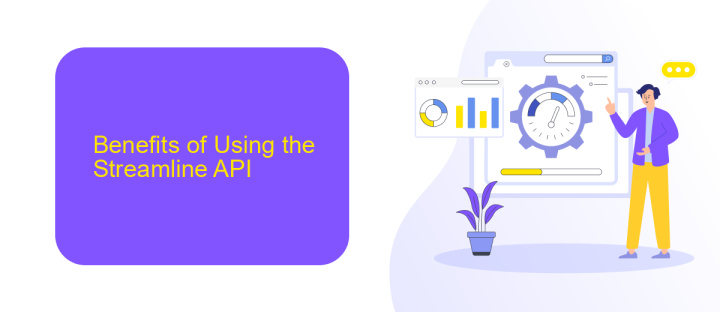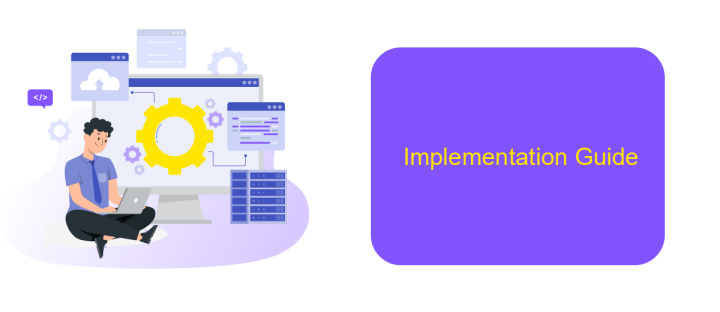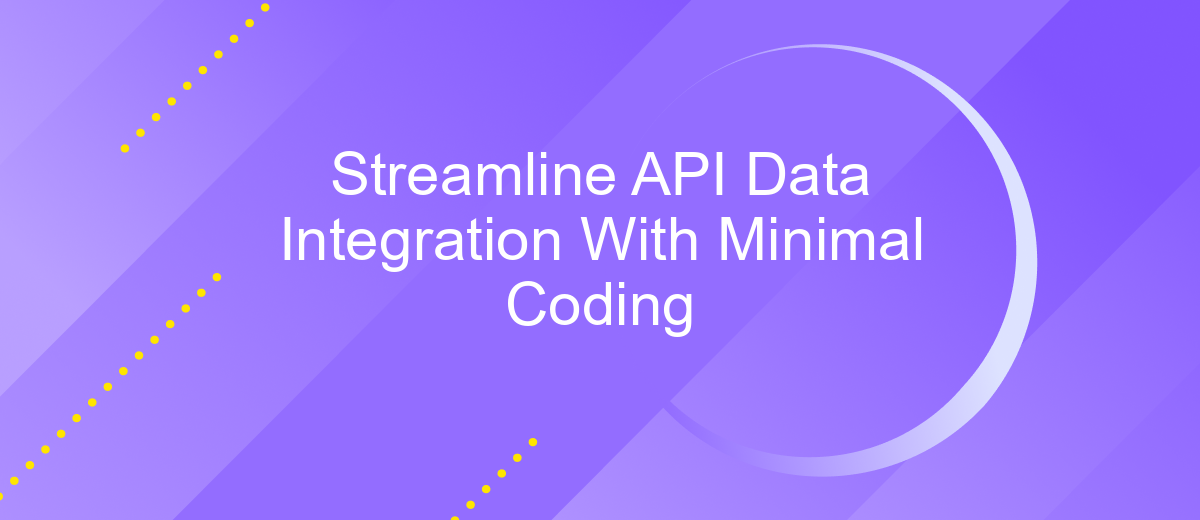Streamline API Data Integration With Minimal Coding
In today's fast-paced digital landscape, integrating APIs efficiently is crucial for seamless data exchange and enhanced functionality. "Streamline API Data Integration With Minimal Coding" explores innovative strategies and tools that simplify the integration process, allowing developers to connect diverse systems with ease. This article provides practical insights and techniques to reduce coding efforts while ensuring robust and reliable API connections.
Introduction
In today's fast-paced digital landscape, integrating various APIs can be a complex and time-consuming task. However, with the right tools and strategies, it is possible to streamline this process significantly. This article explores how you can achieve seamless API data integration with minimal coding, enabling you to focus more on innovation and less on technical hurdles.
- Reduce development time by leveraging pre-built connectors
- Minimize coding efforts with user-friendly platforms
- Ensure data consistency and reliability
One such platform that excels in simplifying API data integration is ApiX-Drive. It offers a wide range of pre-built connectors and an intuitive interface that allows you to set up integrations without extensive coding knowledge. By using ApiX-Drive, businesses can save valuable time and resources, ensuring that their data flows seamlessly across various applications. Whether you are a developer or a business owner, this approach can significantly enhance your operational efficiency.
Benefits of Using the Streamline API

Integrating multiple APIs can be a complex and time-consuming task, requiring significant coding expertise. The Streamline API simplifies this process by offering a user-friendly interface that minimizes the need for extensive programming knowledge. This allows businesses to focus on their core operations while ensuring seamless data integration. With the Streamline API, even those with limited technical skills can efficiently manage API connections, reducing the overall development time and costs.
Using the Streamline API also enhances data accuracy and consistency across various platforms. By automating data transfers and synchronizations, it eliminates the risk of human errors that often occur during manual data entry. Furthermore, services like ApiX-Drive can further facilitate the integration process by providing pre-configured templates and real-time monitoring tools. This ensures that your data is always up-to-date and reliable, allowing for more informed decision-making and improved operational efficiency.
Technical Considerations

When integrating APIs with minimal coding, several technical considerations must be taken into account to ensure a smooth and efficient process. These considerations help in reducing potential issues and optimizing the integration workflow.
- Data Format Compatibility: Ensure that the data formats used by the APIs are compatible. Most APIs use JSON or XML, so it’s crucial to handle these formats correctly.
- Authentication and Security: Implement robust authentication mechanisms, such as OAuth or API keys, to secure data transmission and access.
- Error Handling: Develop a comprehensive error handling strategy to manage API failures or unexpected responses effectively.
- Rate Limiting: Be aware of the API rate limits set by the service providers to avoid service disruption.
- Documentation and Support: Utilize detailed API documentation and support resources to understand the API capabilities and limitations fully.
Using integration platforms like ApiX-Drive can significantly simplify the process by providing pre-built connectors and a user-friendly interface. ApiX-Drive allows for seamless data integration between various services without extensive coding, ensuring that technical considerations are addressed efficiently.
Implementation Guide

Integrating APIs efficiently with minimal coding can significantly streamline your data processes. To achieve this, you need to follow a structured approach that ensures seamless connectivity and data flow between different systems.
First, identify the APIs you need to integrate and gather their documentation. Understanding the endpoints, authentication methods, and data formats is crucial. Tools like Postman can be helpful for testing API requests and responses before actual implementation.
- Choose an integration platform such as ApiX-Drive, which offers a user-friendly interface for connecting various APIs without extensive coding.
- Set up your ApiX-Drive account and select the APIs you wish to integrate from the available options.
- Configure the necessary authentication and data mapping settings as per the API documentation.
- Test the integration thoroughly to ensure data is being transferred accurately and in real-time.
Once your integrations are set up and tested, monitor the data flow regularly to ensure everything operates smoothly. ApiX-Drive provides dashboards and alerts to help you keep track of your integrations and quickly address any issues that may arise.
- Automate the work of an online store or landing
- Empower through integration
- Don't spend money on programmers and integrators
- Save time by automating routine tasks
Case Study and Best Practices
In a recent case study, a mid-sized e-commerce company faced challenges in integrating multiple APIs from various service providers, which led to inefficiencies and data discrepancies. By leveraging ApiX-Drive, they managed to streamline their API data integration process with minimal coding. The platform's intuitive interface allowed the team to set up and manage integrations effortlessly, reducing the time spent on manual data entry and synchronization. As a result, the company saw a 30% increase in operational efficiency and a significant reduction in data errors.
Best practices for API data integration include thoroughly understanding the data flow and mapping requirements before starting the integration. Utilize platforms like ApiX-Drive to simplify the process, especially if your team lacks extensive coding experience. Regularly monitor and test the integrations to ensure data accuracy and system performance. Additionally, keep documentation up-to-date to facilitate easier troubleshooting and future enhancements. By adhering to these practices, businesses can ensure seamless and reliable API integrations, ultimately driving better data management and operational efficiency.
FAQ
What is API data integration?
Why should I consider API data integration for my business?
How can I integrate APIs with minimal coding?
What are the benefits of using a service like ApiX-Drive for API integration?
Is it secure to use third-party services for API integration?
Time is the most valuable resource in today's business realities. By eliminating the routine from work processes, you will get more opportunities to implement the most daring plans and ideas. Choose – you can continue to waste time, money and nerves on inefficient solutions, or you can use ApiX-Drive, automating work processes and achieving results with minimal investment of money, effort and human resources.


